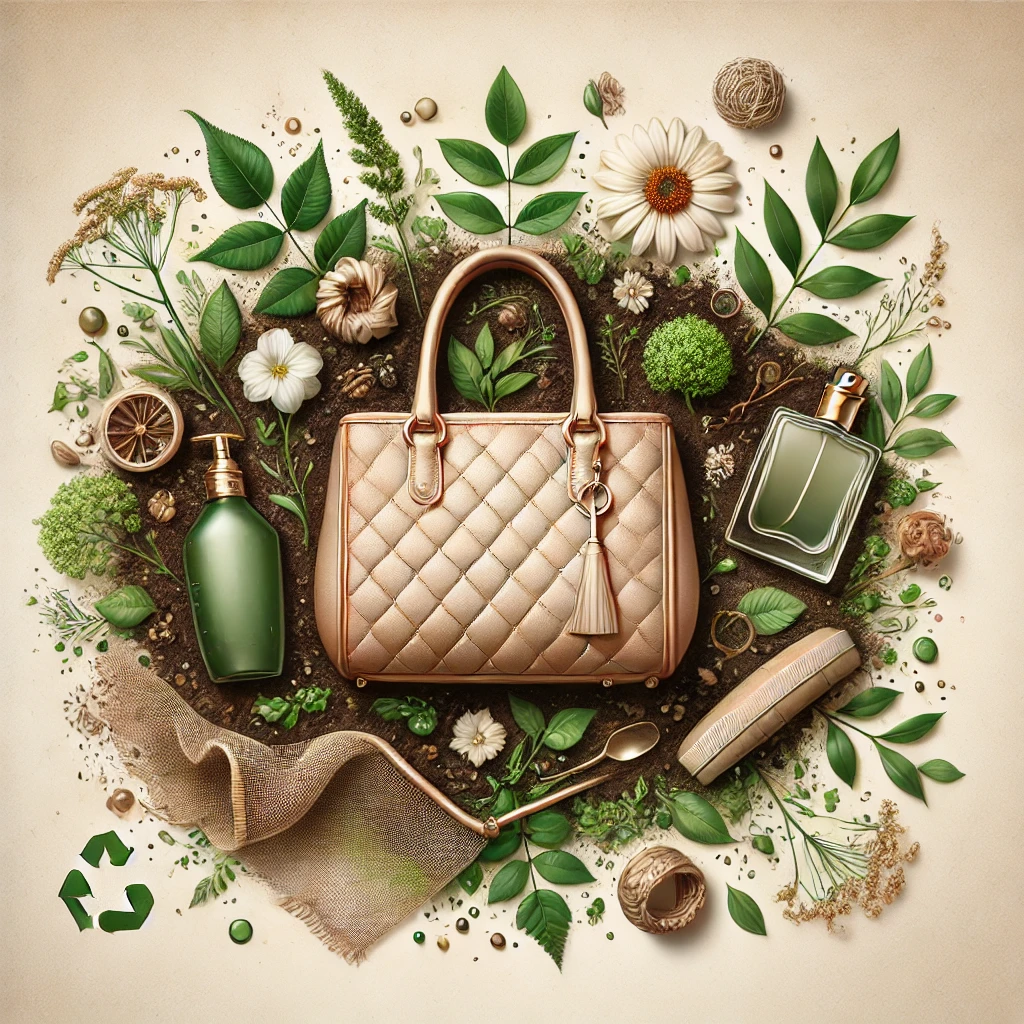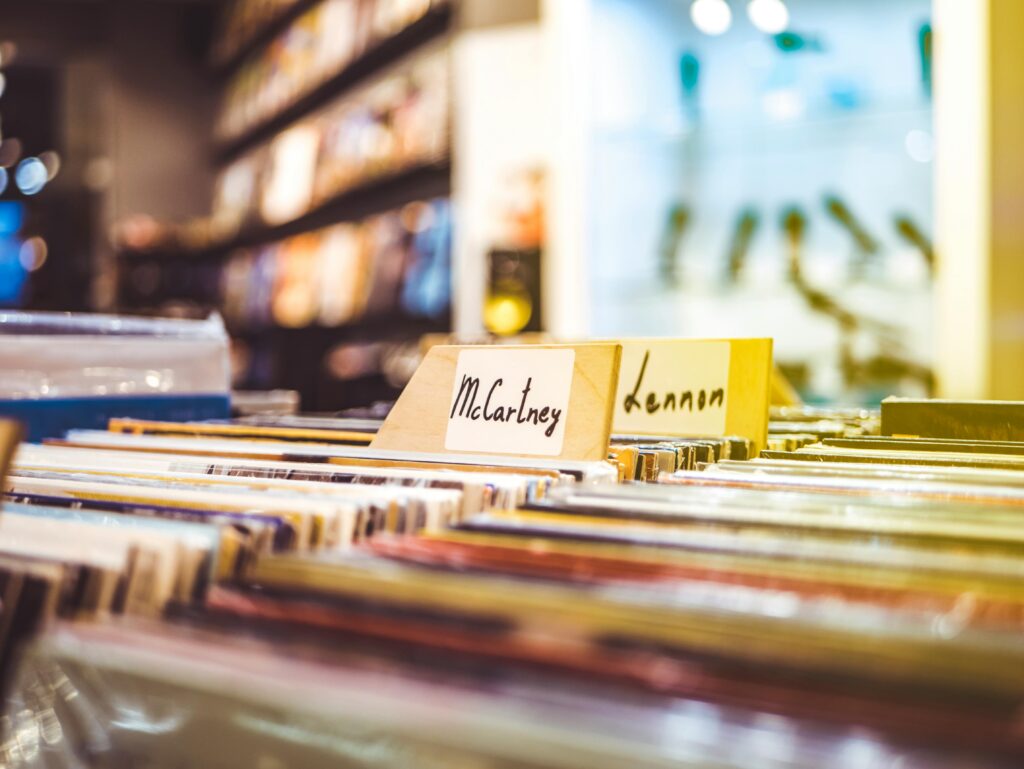Introduction:
Elegance and quality are associated with luxury goods, however they are also exclusive. But in the socio – eco – friendly world we live in today, it is opulence no more, sustainability has become the main selling point. The idea of biodegradable luxury goods, a sort of movement that incorporates high end quality and environmental responsibility, is introduced entering. You could find labels — from handbags to high end cosmetics — touting their products as ‘biodegradable’. This really means what exactly? So are these products truly sustainable or are they just the latest marketing ploy? In this blog, we will tackle the basics of biodegradable luxury goods and evaluate whether they meet up to the claim of a greener future.

Understanding Biodegradable Luxury Goods
Luxury goods that break down with little to no effect on the environment. These products are tailored differently from the traditional luxury items, which are often made from synthetics, processed materials; however, these products tend to make use of organic materials such as plant based fabrics, natural dyes and Eco friendly finishes.
It sounds ideal, but it’s actually a bit more intricate than that. In this post, we address a few common questions about biodegradable luxury goods and sustainability.
FAQ 1: What Makes a Luxury Item “Biodegradable”?
Biodegradable, it is one that will decompose into natural elements (air, sun and microbes) and are considered a product. Brands will also use biodegradable leather alternatives, plant based fibers and packaging that won’t reside in landfill for several centuries to make the luxury items.
But not all are “biodegradable”—and not all break down at the same place and time. Some items will sometimes take weeks, sometimes years, depending on the material and the environment, to decompose fully. Biodegradable luxury items, while a step forward, don’t mean things ‘disappear’ quickly.
FAQ 2: Are Biodegradable Products Really Better for the Planet?
In theory, yes. Biodegradable– or disintegrating– goods are made to decrease the amount of waste and pollution by their returning to the earth and not leavin behind toxins. However, there’s a catch: If biodegradability is to directly help the planet, certain environmental conditions must be met.
For example, materials advertised as “biodegradable” will not always break down in traditional landfills where there is little or no air or light to speed decomposition. But the ideal conditions are usually provided by composting facilities or industrial processing centers, and those facilities don’t always exist. Biodegradable luxury goods are obviously eco friendlier, but that doesn’t mean they’ll always have the desirable low impact effect that consumers want.
FAQ 3: Are Biodegradable Goods Really Sustainable?
Luxury goods sustainability is multipliers. But to consider sustainability is not just about what happens to a product when its life ends, but also the environmental costs involved in manufacturing that item. A better eco friendly improvement is that Biodegradable materials such as organic cotton, bamboo, and recycled fibers need fewer chemicals and energy to produce. But the carbon footprint in producing luxury good—fuel included—the transportation, the energy and the water and things like that, it still matters.
For example, biodegradable leather substitute materials might decrease plastic pollution in the form of a handbag, but if the manufacturing process is energy intensive and requires excess water use, it does its damage. True sustainability begins with production reducing its impact during the whole circuit.
FAQ 4: What Are Some Examples of Biodegradable Luxury Goods?
1. Stella McCartney
Known for her commitment to sustainability, Stella McCartney has made waves in the fashion industry by using biodegradable materials in her luxury lines. The brand’s eco-friendly handbags and shoes utilize mycelium (a mushroom-based leather alternative) and other plant-based materials. The goal is to create products that don’t harm the environment even if they end up in landfills, an effort that resonates with eco-conscious consumers.

2. Hermès
Hermès has partnered with MycoWorks, a company that develops mycelium-based leather called Fine Mycelium. This innovative material mimics the look and feel of animal leather but is fully biodegradable. It’s a step forward for a heritage luxury brand like Hermès, known for its classic leather goods, as it aims to integrate sustainable practices without compromising quality.
3. Gucci’s Circular Lines
Through its “Off The Grid” line, Gucci focuses on biodegradable, recycled, and renewable materials. The initiative includes biodegradable synthetic leather made from wood pulp and organic cotton. Gucci is also transparent about its environmental impact, actively engaging in carbon offsetting programs and conservation efforts.
4. Lush Cosmetics
Known for its vibrant, natural cosmetics, Lush takes biodegradability seriously. Their packaging is often made from recycled paper or biodegradable materials, and many products are sold in solid form, requiring no packaging at all. Biodegradable glitter and natural ingredients also mean their products won’t harm marine life.

5. Everlane
Though not strictly a luxury brand, Everlane’s impact on sustainable fashion cannot be ignored. Their “No New Plastic” pledge aims to eliminate all virgin plastic from their supply chain, including biodegradable packaging for their eco-conscious customers. This initiative proves that brands with a commitment to transparency and sustainability can compete successfully in the luxury market.
visit website: everlane
FAQ 5: Are Biodegradable Luxury Goods Just Greenwashing?
Greenwashing is a real concern. Some brands may use terms like “biodegradable” or “eco-friendly” to appeal to eco-conscious consumers without fully committing to sustainable practices. To avoid falling for greenwashing, consumers should:
- Research the Brand: Look for brands that transparently report their sustainability practices.
- Read Labels Carefully: Certifications like USDA Organic, GOTS, and BPI Certified Compostable offer more assurance that the product is genuinely eco-friendly.
- Check for Transparency: A genuinely sustainable brand will openly share its production methods, materials, and disposal recommendations.
Key Benefits of Biodegradable Luxury Goods
- Reduced Waste: Biodegradable products won’t linger in landfills for centuries.
- Lowered Pollution: These items are designed to break down without releasing harmful toxins.
- Eco-Friendly Materials: Biodegradable goods often use renewable resources, which minimizes reliance on fossil fuels.
The Challenges of Making Biodegradable Luxury Goods Mainstream
Despite their advantages, biodegradable luxury goods face several hurdles:
- Cost: Biodegradable materials and sustainable production methods can be expensive, making these goods accessible mainly to wealthier consumers.
- Limited Infrastructure: Without proper waste facilities, even biodegradable products may not break down efficiently, limiting their environmental benefit.
- Consumer Education: The market relies on consumers understanding how to dispose of these products properly, which may not always happen.
How Biodegradable Luxury Goods Decompose
Biodegradable luxury goods are crafted with materials that break down naturally over time, ideally leaving no harmful residue. However, not all biodegradable goods decompose under the same conditions or at the same pace, and understanding how these products break down can reveal both the promise and the limitations of biodegradable luxury.
1. What Makes a Material Biodegradable?
Biodegradable materials are designed to be broken down by microorganisms, such as bacteria and fungi, into natural elements like water, carbon dioxide, and biomass. The goal is to prevent long-term waste accumulation and reduce pollution in landfills and oceans. Materials like mycelium leather (derived from mushrooms), organic cotton, and bioplastics are popular choices in biodegradable luxury because they can decompose back into the environment without leaving toxins behind.
2. The Ideal Conditions for Decomposition
For most biodegradable luxury items, the speed and efficiency of decomposition depend heavily on the environment. In compostable settings with adequate heat, moisture, and oxygen, these items can break down relatively quickly. For instance, materials like mycelium leather or Tencel (a plant-based fiber) can decompose in a matter of weeks or months if properly composted. But if these items end up in a landfill, where there is limited oxygen and sometimes excessive moisture, decomposition can be slowed significantly, potentially taking years.
3. The Decomposition Process of Popular Biodegradable Materials
- Mycelium Leather: Created from the root structure of mushrooms, mycelium leather is fully biodegradable and compostable. It starts to break down when exposed to air, moisture, and bacteria, transforming into harmless organic matter.
- Organic Cotton and Hemp: Natural fibers like organic cotton and hemp decompose well in industrial composting conditions, usually breaking down within a few months. The fibers are digested by microbes and returned to the soil as organic material.
- Bioplastics (such as PLA): Bioplastics, commonly used in packaging, can also be biodegradable. However, many require industrial composting facilities to fully break down, as home composting environments often lack the high temperatures necessary to decompose these materials efficiently.
4. The Role of Microorganisms in Biodegradation
Microorganisms, such as bacteria and fungi, play a crucial role in the breakdown of biodegradable luxury goods. When these materials enter a composting environment, microbes attach to their surfaces and begin to consume the organic components. Over time, this microbial activity converts the item into simpler compounds like carbon dioxide, water, and humus, enriching the soil with nutrients.
5. Challenges with Decomposition in Standard Landfills
Many landfills are sealed to prevent waste from contaminating groundwater, but this also reduces oxygen exposure, which is essential for microbial breakdown. As a result, even biodegradable items may take decades to decompose in landfills. For biodegradable luxury goods to truly deliver on their environmental promise, they ideally need to be disposed of in facilities with the right conditions for composting.
Share this content:
